Do you have a question about the Mackie ProFX16 and is the answer not in the manual?
Steps for zeroing the mixer and making basic audio connections.
Procedure for adjusting input levels and getting initial sound.
Overview of USB connectivity and key operational tips.
Highlights key features like onboard FX and compressors.
Details on the mixer's 2x2 USB interface for recording and playback.
Diagram illustrating a common live sound setup with the mixer.
Description of the standard IEC power connector and its features.
Explanation of the mixer's power switch operation and standby mode.
Details on the 2x2 USB interface for routing and computer connection.
Explanation of USB output routing options for recording.
History and explanation of the Mackie Running Man logo.
Description of MIC, LINE, and STEREO LINE input connectors.
Controls for INSERT, GAIN, LOW CUT, and EQ.
Controls for AUX MON, AUX FX, PAN, MUTE, OL LED.
Controls for ASSIGN, PFL SOLO, FADER, USB, and COMPRESSOR.
Outputs for monitor mixes and external effects.
Footswitch connection and stereo aux return inputs.
Outputs for main mix, control room monitoring, and subgroups.
Headphone output and RCA inputs/outputs for tape sources.
Switch to enable phantom power for condenser mics.
Indicator light for mixer power status.
7-band graphic EQ and its bypass function.
Switch to select graphic EQ routing for main mix or monitors.
Signal level meters and solo mode indicator.
Controls for aux monitor and return signal levels.
Routing and level controls for onboard effects.
Mute switch for internal FX and USB output routing switch.
Switch and level control for the 2-track return source.
Mute switch for breaks and control room/headphone level.
Assign switches and faders for subgroup routing and control.
Primary stereo fader for overall output level adjustment.
Steps to diagnose and resolve common operational problems.
Information on obtaining warranty and non-warranty service.
Details on microphone XLR and stereo/balanced TRS connections.
Description of RCA connectors and using insert jacks.
Data on noise characteristics and harmonic distortion.
Maximum levels, EQ specs, and input/output impedances.
AC power requirements, dimensions, and weight.
Steps for zeroing the mixer and making basic audio connections.
Procedure for adjusting input levels and getting initial sound.
Overview of USB connectivity and key operational tips.
Highlights key features like onboard FX and compressors.
Details on the mixer's 2x2 USB interface for recording and playback.
Diagram illustrating a common live sound setup with the mixer.
Description of the standard IEC power connector and its features.
Explanation of the mixer's power switch operation and standby mode.
Details on the 2x2 USB interface for routing and computer connection.
Explanation of USB output routing options for recording.
History and explanation of the Mackie Running Man logo.
Description of MIC, LINE, and STEREO LINE input connectors.
Controls for INSERT, GAIN, LOW CUT, and EQ.
Controls for AUX MON, AUX FX, PAN, MUTE, OL LED.
Controls for ASSIGN, PFL SOLO, FADER, USB, and COMPRESSOR.
Outputs for monitor mixes and external effects.
Footswitch connection and stereo aux return inputs.
Outputs for main mix, control room monitoring, and subgroups.
Headphone output and RCA inputs/outputs for tape sources.
Switch to enable phantom power for condenser mics.
Indicator light for mixer power status.
7-band graphic EQ and its bypass function.
Switch to select graphic EQ routing for main mix or monitors.
Signal level meters and solo mode indicator.
Controls for aux monitor and return signal levels.
Routing and level controls for onboard effects.
Mute switch for internal FX and USB output routing switch.
Switch and level control for the 2-track return source.
Mute switch for breaks and control room/headphone level.
Assign switches and faders for subgroup routing and control.
Primary stereo fader for overall output level adjustment.
Steps to diagnose and resolve common operational problems.
Information on obtaining warranty and non-warranty service.
Details on microphone XLR and stereo/balanced TRS connections.
Description of RCA connectors and using insert jacks.
Data on noise characteristics and harmonic distortion.
Maximum levels, EQ specs, and input/output impedances.
AC power requirements, dimensions, and weight.
| Channels | 16 |
|---|---|
| EQ Bands | 3-band |
| USB Interface | Yes |
| Type | Analog Mixer |
| Inputs | 16 |
| Phantom Power | Yes |
| Aux Sends | 2 |
| Effects | Yes |
| Returns | 2 |
| Faders | 60mm |
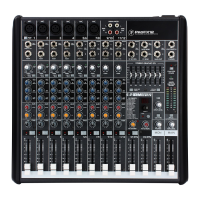

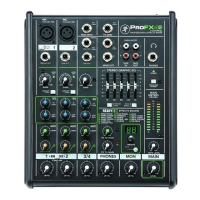
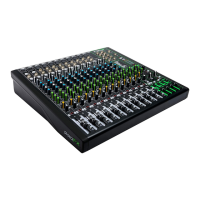
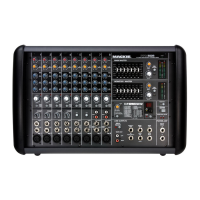
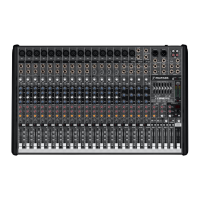
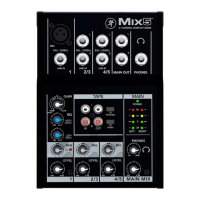
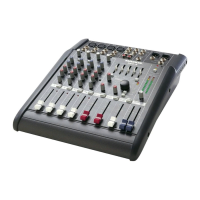

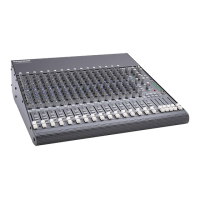
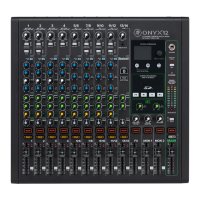
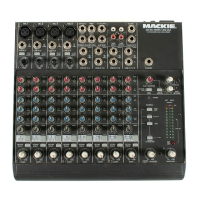
